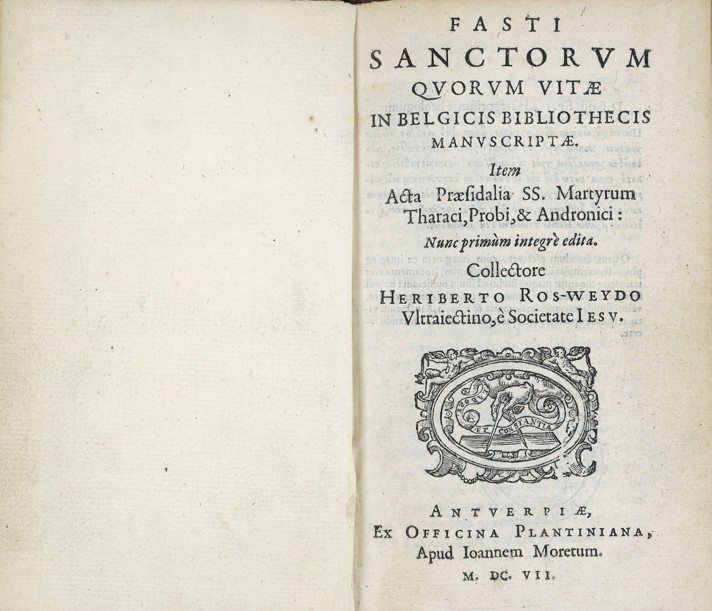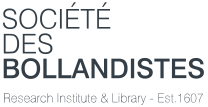Revisiting the Bollandist Past
Rosweyde, Bolland and then their successors, established the first Bollandist library in the Professed House in Antwerp during the 17th and 18th centuries. It was regarded by experts as one of the finest of its time. It housed ancient manuscripts, books, copies of hagiographical texts, correspondence from scholars, clerics and laypeople from all over Europe, as well as other work-related notes. It was this collection which helped them prepare the great enterprise of the Acta Sanctorum. This Library was dispersed following the suppression of the Society of Jesus and the revolutionary period.
Part of the archives from the Antwerp period, mainly copies of hagiographical texts and correspondence, what is commonly called the “collectanea bollandiana”, has survived the vagaries of time. These documents are currently kept in two main repositories: the current Bollandist library and the Royal Library of Belgium. They constitute the most important set of archives from the Ancien Régime in Belgium.
The archives of the Bollandists who restarted working in 1837 are preserved in the current library. They contain mainly scientific correspondence received by the Bollandists and working notes, administrative documents and others relating to the daily life of the Society.
Access to the archives :
For the archives held at the Royal Library of Belgium (KBR) : see the website of this institution
For the archives held at the Bollandist Library : contact Bernard Joassart (joassart@bollandistes.be)
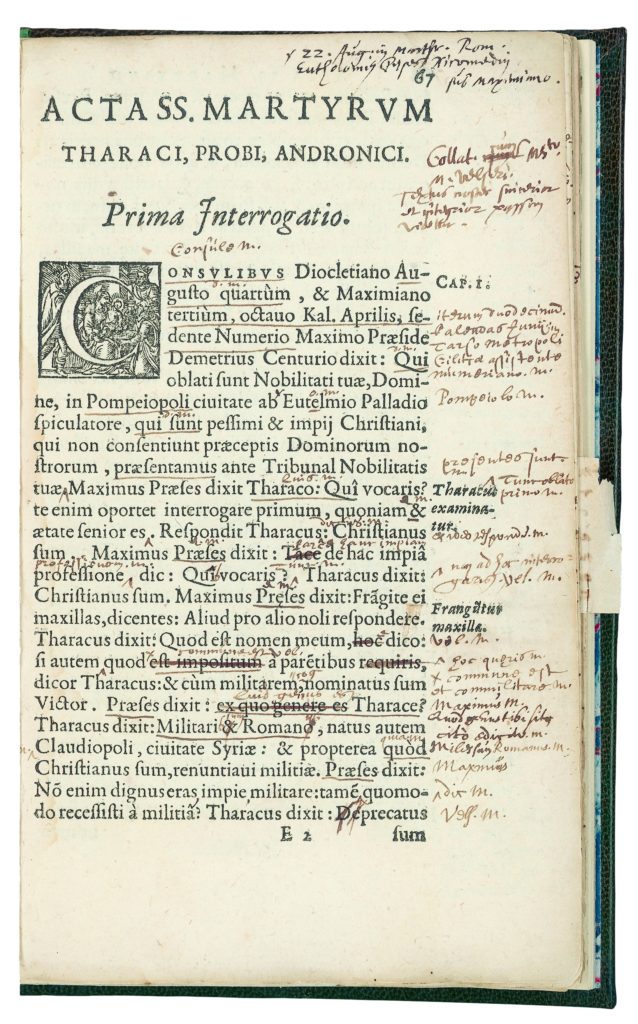
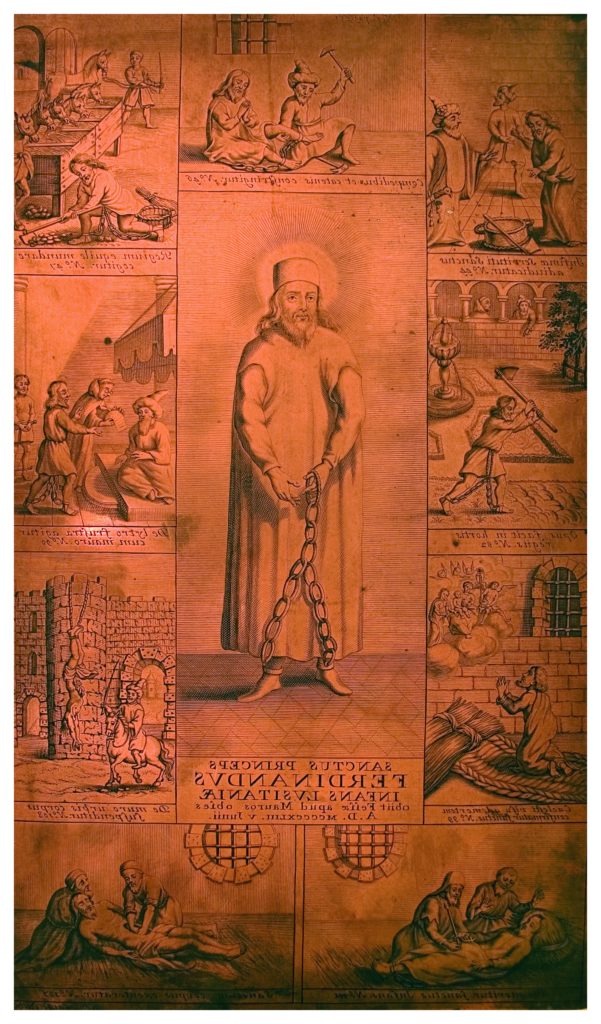
Hundreds of Engraved Copper Plates
Among its heritage treasures, the Bollandist Society owns a few thousand Antwerp copper plates dating from the 16th to the 18th centuries, most of which are in a good state of conservation. These plates, which vary in size, were used mainly for the engravings printed in the Acta Sanctorum, but also for other works by Daniel Papebroch and the devotional images printed on behalf of the Bollandists, particularly for religious congregations. They offer an often interesting iconography of saints, places or items associated with them, in some cases preserving the only known representation of artefacts that have since disappeared. The commentaries associated with these imagines in the Acta Sanctorum provide a wealth of information about the collaborators of the early Bollandists and foreshadow modern aesthetic analysis. A detailed inventory project will form the first part of the study, before looking at their technical and iconographic dimensions.
Contact : François De Vriendt (devriendt@bollandistes.be)
Online Index
of Greek Hagiographic MSS
Medieval Greek texts devoted to the memory of the saints were copied extensively over the centuries and often grouped together in specialized collections known as hagiographic manuscripts. Copies that have survived the ravages of time are now scattered throughout libraries around the world; their current location is indicated in the Pinakes database (IRHT, CNRS, Paris), which also analyzes their content. More info.
Contact : Xavier Lequeux (lequeux@bollandistes.be)
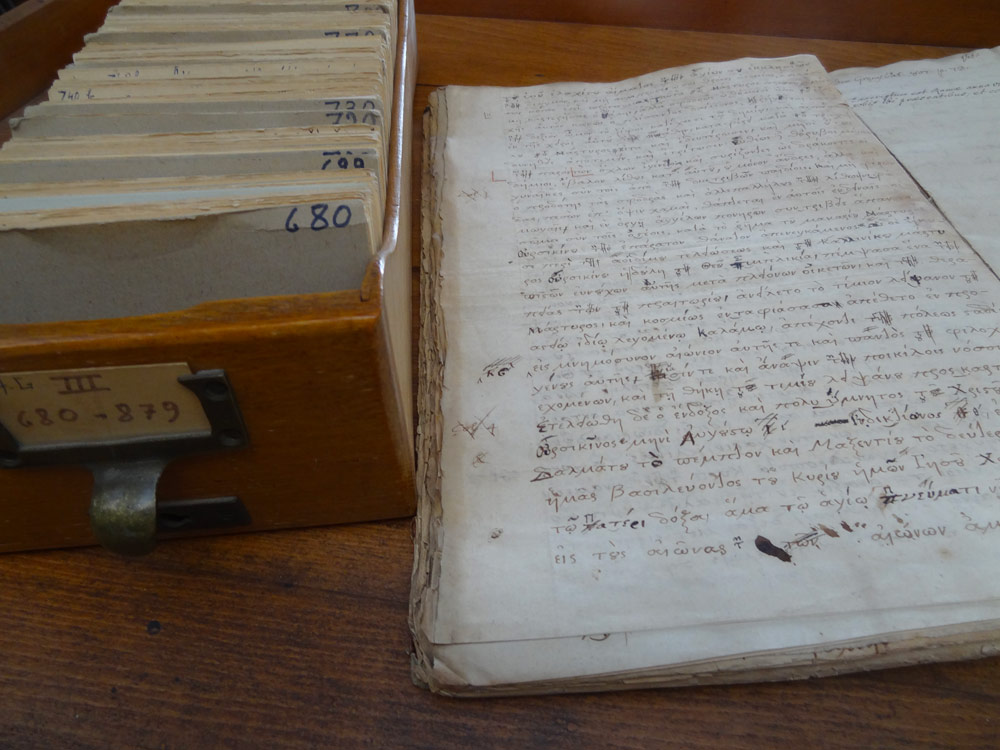
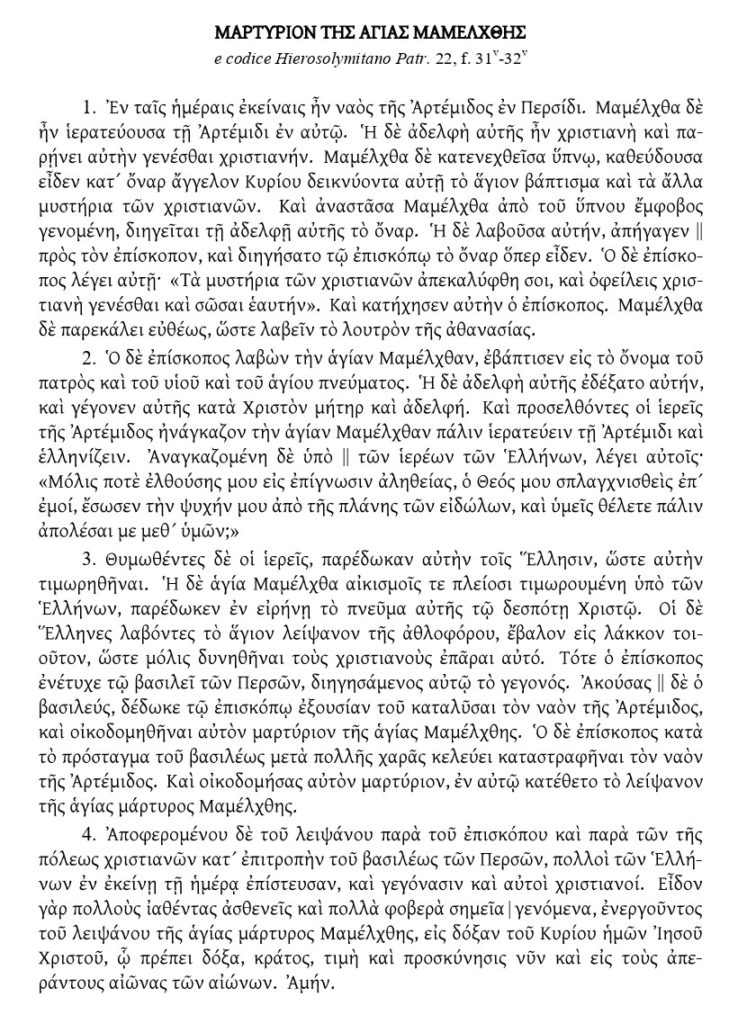
Online Census
of Greek Hagiographic Texts
During Late Antiquity and the Middle Ages, the history of the saints inspired many writers in Byzantium. To perpetuate the memory of the saints, authors composed numerous panegyrics, Passions of martyrs, Lives of saints, and collections of miracles; occasionally, texts from apocryphal literature or collections of biographical notes were also used. Literary works devoted to a saint make up his or her hagiographic dossier, which can now be consulted in Brepols’ ClaCla database, under the name of the saint concerned.
Contact : Xavier Lequeux (lequeux@bollandistes.be)
Sanctity under the Ottomans: the Greek Neomartyrs
From the fall of Constantinople to the last phase of the Greek war of Independence, bishops, monks, and ordinary people had sacrificed their lives for their Christian faith. The aim of this project is to inventory, to study, and to publish the texts that preserve the memory of their sufferings.
Contact : Xavier Lequeux (lequeux@bollandistes.be)
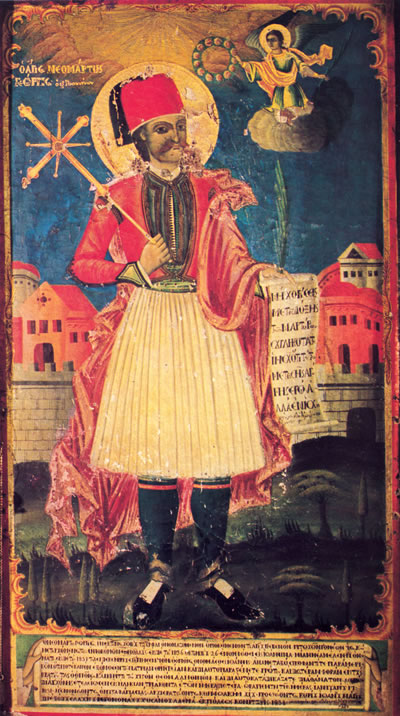
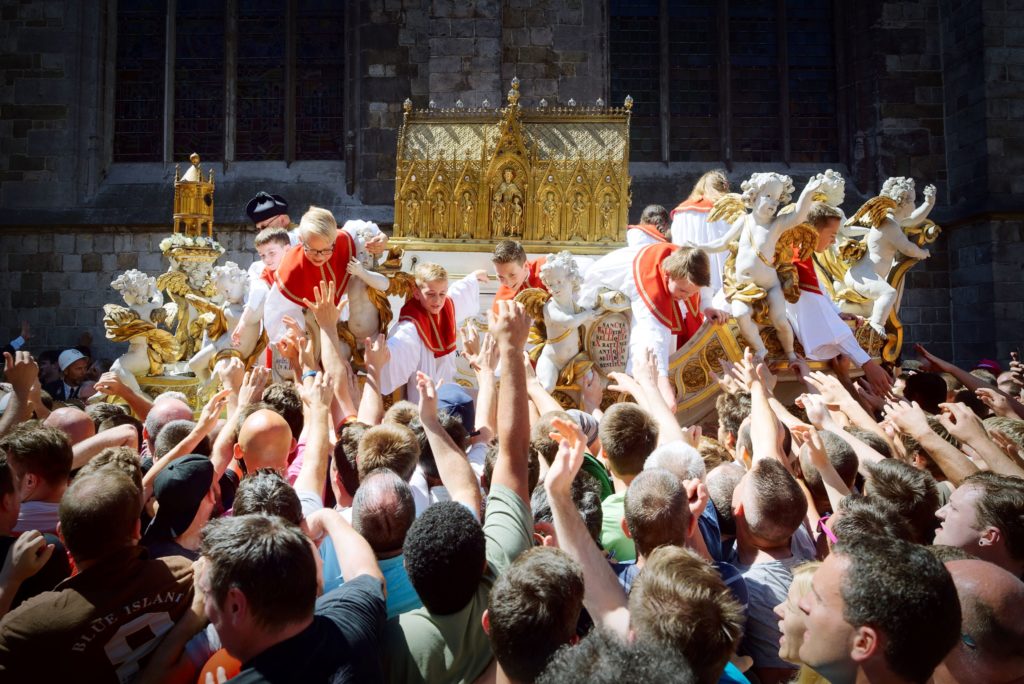
Relics and Christian Heritage
In a world in the throes of secularisation, the Bollandists are regularly called upon to put their knowledge and expertise at the service of communities, both local and religious, and private individuals. This often supposes providing historical information about saints, their iconography or the traditions they have inspired, with a view to explaining them. This approach sometimes involves the use of modern media (participation in radio and TV programmes, social networking, etc.), allowing for a degree of vulgarisation. In some cases, the Bollandists are directly involved in practical operations in the field, such as identifying relics kept in sanctuaries, helping to safeguard religious heritage (such as chapels), or advising local clergy on rituals linked to a saint. In addition, these various surveys sometimes lead to scientific publications.
Contact : François De Vriendt (devriendt@bollandistes.be)
(c) J.-F. Berhin
Online Census
of Latin Hagiographic Texts
prior to 1500
The Bibliotheca hagiographica Latina (1898-1901) and its Novum Supplementum (1986) are now part of Clavis Clavium (ClaCla), the online database realized in collaboration with the Katholieke Universiteit Leuven and Brepols Publishers. It is now being progressively updated by the Bollandists in order to include the numerous hagiographic texts published after 1982, while newly published editions are immediately inserted. As much as possible, references of translations in modern languages as well as of historical and philological studies related to the texts are also integrated in the database.
Contact : Robert Godding (godding@bollandistes.be)

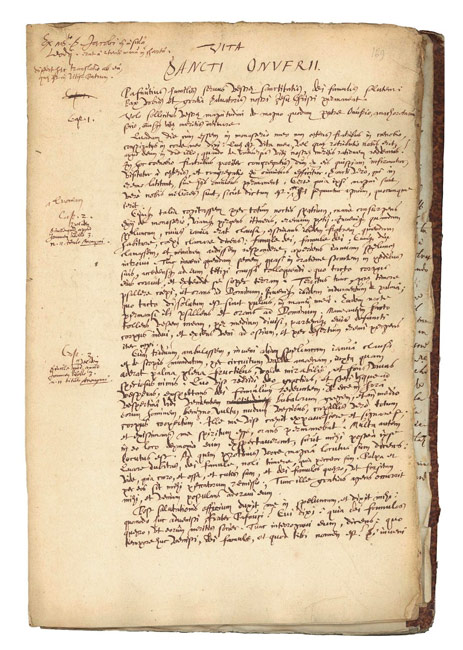
Online Census
of Latin Hagiographic Manuscripts
In 1998 BHLms (Bibliotheca Hagiographica Latina Manuscripta) was launched. An online database realized by X. Lequeux and his Bollandist colleagues in collaboration with G. Philippart (Namur University) and including all the Latin hagiographic manuscripts described in the catalogues published by the Bollandists, it was immediately adopted by the scholar community. A completely new version including a much larger number of manuscripts (mostly from the unpublished card indexes of the Bollandists), and open to further updates, is being prepared in collaboration with the IRHT (Paris).
Contact : Robert Godding (godding@bollandistes.be)
Ancient Hagiography in Print
Thanks to the support of the Fonds Baillet Latour, the catalogue of the ancient fund of the Bollandist library, an exceptional collection of almost 25,000 books printed before 1800, can now be consulted online. It includes a large number of hagiographic monographs which may form a basis for the study of hagiographic publications in Europe between the 16th and the 18th century. Some of those books were part of the ancient Museum Bollandianum dispersed after the suppression of the Society of Jesus, the catalogue of which is still preserved in the present Bollandist library, which opens new prospects on the history of the ancient library.
Contact : Robert Godding (godding@bollandistes.be)
